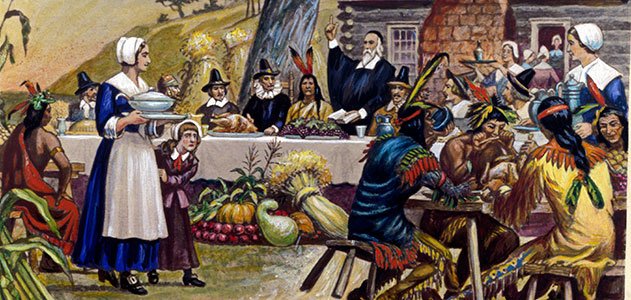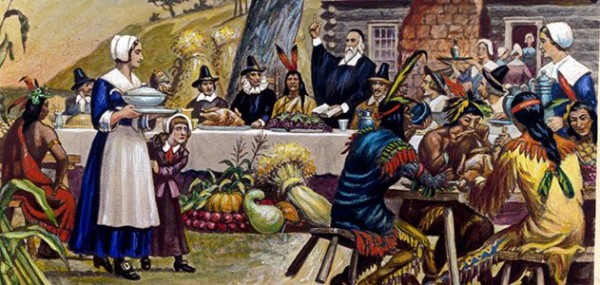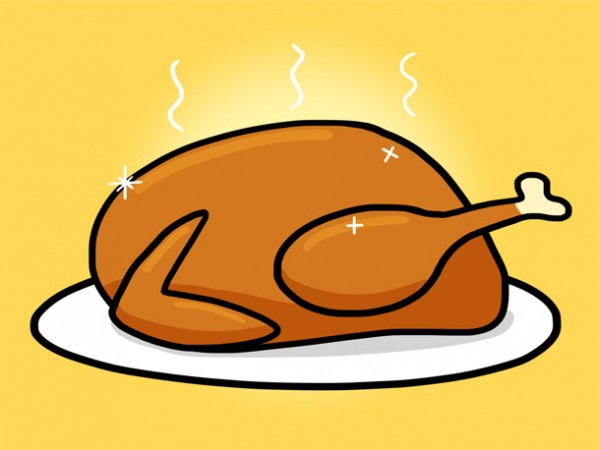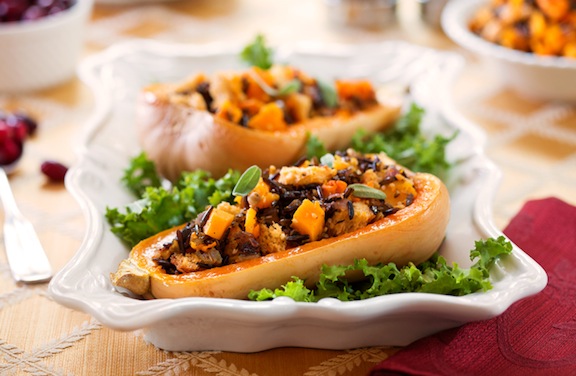
23 Nov To Turkey Or Not to Turkey, That Is the Question
What was on the menu of the very first Thanksgiving dinner? And what will you serve? The first question is easily answered by Megan Gambino of Smithsonian.com. The second, well, we offer a few choices for traditional from The Cooking Channel, all ranked by how long the recipe takes to make and degree of difficulty. Vegan or vegetarian? We found a wide variety of delicious options from VegKitchen.com from apps to dessert.

According to the Smithsonisian, traditional Thanksgiving dinner includes turkey, stuffing and mashed potatoes but the First Thanksgiving likely included wildfowl, corn, porridge and venison. (Bettmann / Corbis)
Two primary sources—the only surviving documents that reference the meal—confirm that these staples were part of the harvest celebration shared by the Pilgrims and Wampanoag at Plymouth Colony in 1621. Edward Winslow, an English leader who attended, wrote home to a friend:
“Our harvest being gotten in, our governor sent four men on fowling, that so we might after a special manner rejoice together after we had gathered the fruit of our labors. They four in one day killed as much fowl as, with a little help beside, served the company almost a week. At which time, amongst other recreations, we exercised our arms, many of the Indians coming amongst us, and among the rest their greatest king Massasoit, with some ninety men, whom for three days we entertained and feasted, and they went out and killed five deer, which they brought to the plantation and bestowed on our governor, and upon the captain and others.”
William Bradford, the governor Winslow mentions, also described the autumn of 1621, adding, “And besides waterfowl there was great store of wild turkeys, of which they took many, besides venison, etc. Besides, they had about a peck a meal a week to a person, or now since harvest, Indian corn to that proportion.”
But determining what else the colonists and Wampanoag might have eaten at the 17th-century feast takes some digging. To form educated guesses, Wall, a foodways culinarian at Plimoth Plantation, a living history museum in Plymouth, Massachusetts, studies cookbooks and descriptions of gardens from the period, archaeological remains such as pollen samples that might clue her in to what the colonists were growing.
Our discussion begins with the bird. Turkey was not the centerpiece of the meal, as it is today, explains Wall. Though it is possible the colonists and American Indians cooked wild turkey, she suspects that goose or duck was the wildfowl of choice. In her research, she has found that swan and passenger pigeons would have been available as well. “Passenger pigeons—extinct in the wild for over a century now—were so thick in the 1620s, they said you could hear them a quarter-hour before you saw them,” says Wall. “They say a man could shoot at the birds in flight and bring down 200.”
Small birds were often spit-roasted, while larger birds were boiled. “I also think some birds—in a lot of recipes you see this—were boiled first, then roasted to finish them off. Or things are roasted first and then boiled,” says Wall. “The early roasting gives them nicer flavor, sort of caramelizes them on the outside and makes the broth darker.”
It is possible that the birds were stuffed, though probably not with bread. (Bread, made from maize not wheat, was likely a part of the meal, but exactly how it was made is unknown.) The Pilgrims instead stuffed birds with chunks of onion and herbs. “There is a wonderful stuffing for goose in the 17th-century that is just shelled chestnuts,” says Wall. “I am thinking of that right now, and it is sounding very nice.” Since the first Thanksgiving was a three-day celebration, she adds, “I have no doubt whatsoever that birds that are roasted one day, the remains of them are all thrown in a pot and boiled up to make broth the next day. That broth thickened with grain to make a pottage.”
In addition to wildfowl and deer, the colonists and Wampanoag probably ate eels and shellfish, such as lobster, clams and mussels. “They were drying shellfish and smoking other sorts of fish,” says Wall.
If turkey is the main event, the Cooking Channel offers up a number of different options here, among them, maple-bacon with sage butter; deep-fried; orange and shallot stuffed; and traditional roasted with stuffing.
For the vegans and vegetarians at your table, how about green chili cornbread? Pumpkin peanut soup? Butternut squash and mixed mushroom lasagna? Quick black bean and sweet potato chili? Walnut-apple stuffing? Veggie bread pudding? Quinoa salad with fennel and cranberries? Chard with brussels sprouts and red pepper? All here.
http://www.smithsonianmag.com/author/megan-gambino/




Sorry, the comment form is closed at this time.